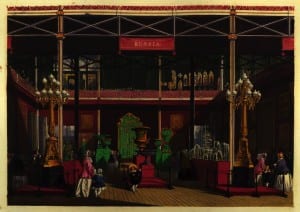Ukraine’s ambivalent future
By Sean L Hanley, on 4 November 2014
Events in Ukraine have polarised opinion, but the country’s present and future are best understood as permeated by ambivalence, argues Alena Ledeneva.
The situation in Ukraine might grasped best by a specialist on geopolitics, a scholar of the (il)legitimacy of power, an ethnographer of insurgencies, an analyst of media propaganda wars, a trauma therapist, or by a psychologist of phobias and love-hate relationships. I have none of these specialisms, but I share their intellectual challenge: the theme of ambivalence.
As ‘East’ and ‘West’ embark on another cycle of ideological confrontation and political standoff, there is little room left for marginal positions or ambivalent attitudes. As the outside world lashes out at Putin over the Crimea and East Ukraine, Russians turn wartime patriotic. Yet paradoxically, exactly because it is impossible to achieve a consensus – and because the black-and-white positions over the Crimea and east Ukraine split families, friendships, and international clubs – it is the understanding of grey areas and backgrounds that may help define the way forward for Ukraine.
One legacy shared by most survivors of oppressive political regimes is what George Orwell called ‘‘doublethink’’ – which Yury Levada and Alexander Zinoviev branded as being the key feature of Homo sovieticus. Under late socialism, when present-day elites in Russia and Ukraine were growing up, it was irrelevant whether people believed official ideological messages or not. Instead, the relation to officialdom became based on intricate strategies of simulated support and on ‘nonofficial’ practices.
Individual doublethink developed into collective double standards that implied the ability to hold contradictory views in private and in public and the capacity to switch between them smoothly, when applied to ‘us’ and ‘them,’ to ‘ordinary citizens’ and to the Party leaders, and to one’s personal circle and to society as a whole.
In its sociological sense, ambivalence, as defined by Robert Merton, refers to incompatible normative expectations of attitudes, beliefs, and behaviour. The incompatibility is assigned to a status and the social structures that generate the circumstances in which ambivalence is embedded. The core type of sociological ambivalence puts contradictory demands upon the occupants of a status in a particular social relation. Since these norms cannot be simultaneously expressed in behaviour, they come to be expressed in an oscillation of behaviours.
In the context of modernity, ambivalence is associated with fragmentation and failure of manageability. Zygmunt Bauman defined ambivalence as the possibility of assigning an object or an event to more than one category. Bauman views it as a language-specific disorder, with its main symptom being the acute discomfort we feel when we are unable to read the situation properly and to choose between alternative actions.
Those who have detailed knowledge of the geography and the economic history of Ukraine or have done exhaustive research on the conflicting accounts on the current situation end up developing symptoms of ambivalence (more…)
 Close
Close




